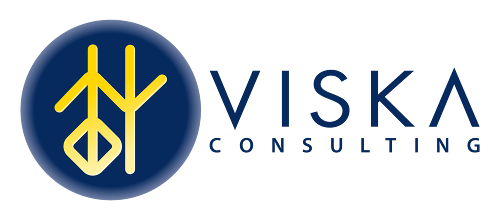In the complex ecosystem of business, the synergy between employee engagement, customer satisfaction, and revenue growth is undeniable. Engaged employees often lead to happier staff, which positively influences customers and increases business revenue. This article explores this interconnected dynamic, focusing on how nurturing employee engagement and happiness can boost customer loyalty and drive revenue growth.
Elevating Employee Engagement
The journey to business success begins within the heart of the organization – its employees. Engaging employees is not just about job satisfaction but involves cultivating a deeper, more meaningful connection to the company’s mission and values. Engagement in the workplace is about more than just job satisfaction; it involves a deep connection to the company’s mission, a sense of being valued, and active participation in the company’s culture and success. Engaged employees often feel a sense of purpose and acknowledgment, which naturally leads to higher job satisfaction and happiness.
Research consistently backs this up. For instance, a Gallup study found that businesses with highly engaged employees see a 17% increase in productivity. Employees who are engaged and invested in their roles exhibit more enthusiasm, creativity, and commitment to their work. This heightened state of engagement often results in a happier and more fulfilling work experience.
Here are five ways to enhance employee engagement:
- Promote Open and Honest Communication: Cultivating a culture of transparency and open communication is pivotal. Regular team meetings, open forums, and transparent communication from leadership help employees feel informed and valued. This openness fosters trust and a sense of belonging, which is crucial for engagement.
- Recognition and Rewards: Consistently acknowledging and rewarding employees for their hard work and achievements can significantly boost morale. Whether it’s through public recognition, awards, or performance bonuses, showing appreciation makes employees feel valued and motivates them to maintain high performance.
- Professional Growth Opportunities: Providing avenues for career advancement and skill development keeps employees motivated and committed. Investing in training programs, workshops, and mentorship opportunities demonstrates a commitment to their professional growth, enhancing engagement.
- Work-Life Balance: Encouraging a healthy balance between professional and personal life is essential. Flexible working arrangements, remote work options, and supportive time-off policies can help employees manage their responsibilities more effectively, leading to increased job satisfaction.
- Positive Workplace Culture: A workplace that promotes teamwork, inclusivity, and respect contributes to a more enjoyable work environment. Activities like team-building events and community projects not only strengthen bonds among employees but also create a more connected and engaged workforce.
Happy Employees Create Happy Customers
The transition from happy employees to satisfied customers is more than just a feel-good story; it’s a business reality. Employees who are content and motivated in their workplace tend to have a positive demeanor in customer interactions. This positivity is infectious and can significantly enhance the customer experience.
This isn’t just conjecture; it’s supported by data. A study by the University of Oxford found that happy workers are 13% more productive, directly impacting customer service quality. When customers interact with happy, engaged employees, they are more likely to positively perceive the business, leading to higher satisfaction and loyalty.
The Result: Loyal Customers and Increased Revenue
The final link in this chain is the translation of customer happiness into tangible business growth. Satisfied customers are not only more likely to return but also tend to spend more. They become advocates for the brand, sharing their positive experiences with others.
The Harvard Business Review reported that customers with the best past experiences spend 140% more than those with the poorest past experience. Moreover, Bain & Company’s research underscores that increasing customer retention rates by just 5% can increase profits by 25% to 95%. The message is clear: customer loyalty, driven by positive interactions with happy employees, is a key driver of revenue growth.
Building a Culture that Fosters Engagement and Satisfaction
So, how do businesses create this virtuous cycle? It starts by focusing on what makes a positive culture and addressing what employees seek to find their work fulfilling.
- Recognition and Value: Employees need to feel recognized for their efforts and valued as individuals. This includes not just monetary rewards but also verbal acknowledgment and opportunities for growth.
- Alignment with Company Goals: Employees feel more engaged when they understand how their work contributes to the larger goals of the company. This alignment fosters a sense of purpose and belonging.
- Opportunities for Growth: Professional development opportunities are a significant driver of employee satisfaction. Employees are happier and more engaged when they see a path for career advancement and skill development.
Conclusion
Summing it up:
- Employee Engagement: Cultivate an environment where employees feel connected and valued.
- Happiness and Productivity: Understand that engaged employees are happier and more productive.
- Customer Satisfaction: Recognize that happy employees lead to satisfied customers.
- Revenue Growth: Leverage the link between customer satisfaction and increased spending.
The pathway from engaged employees to increased revenue is clear and compelling. By focusing on effective communication, recognition, professional growth, work-life balance, and positive work culture, businesses can boost employee engagement and happiness. This, in turn, leads to greater customer satisfaction and loyalty, ultimately driving revenue growth. In essence, the journey to unlocking business growth and success starts with the investment in the well-being and engagement of the workforce, a strategy that benefits not just the company and its employees but also its customers and overall market standing.
Engage Your Employees with Great Communication
Struggling to identify obstacles to productivity and growth? Communication is often a key issue in our assessments, frequently cited as a reason for employees feeling excluded or under-informed. You’re in the right place. At VISKA, we specialize in helping businesses like yours achieve optimal performance. Reach out to us today and let’s discuss how we can take your productivity to new heights.

